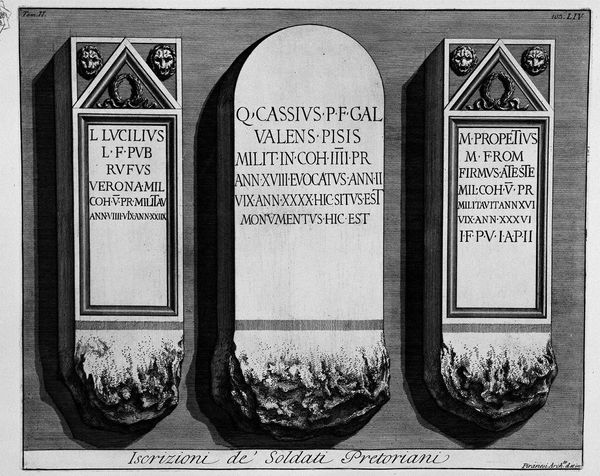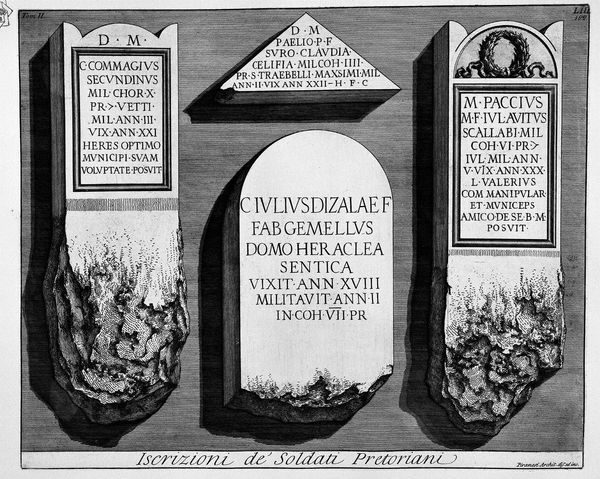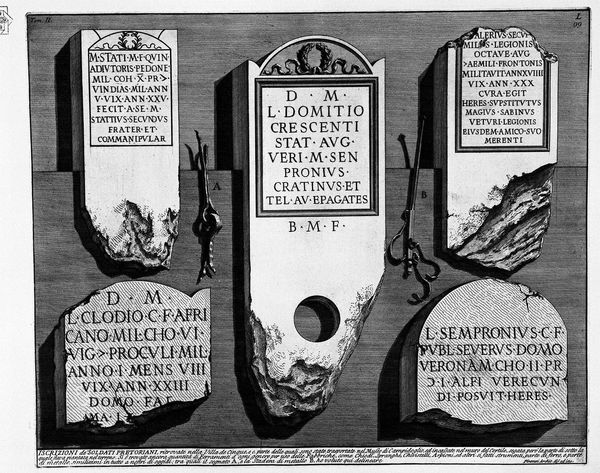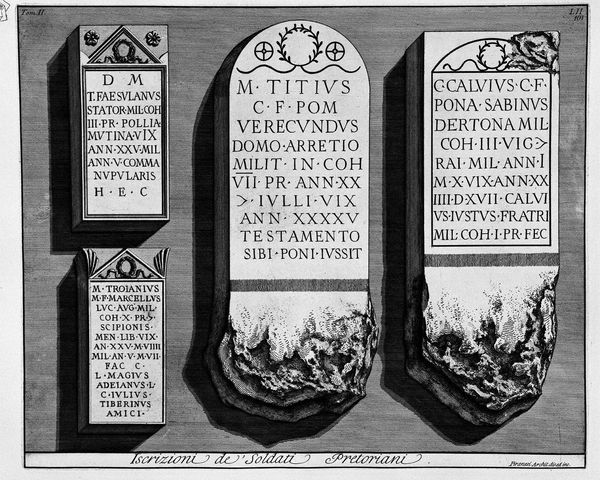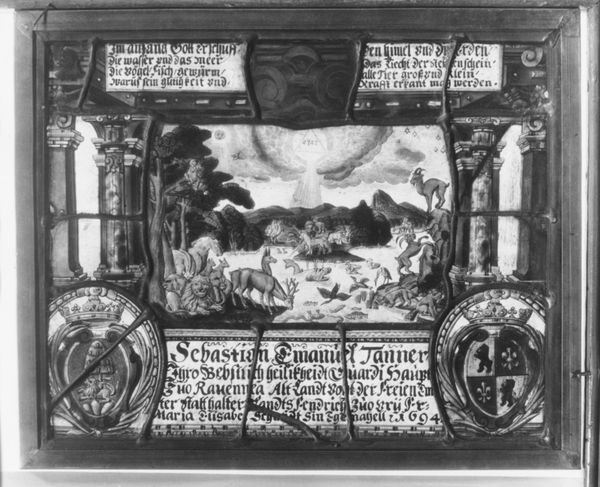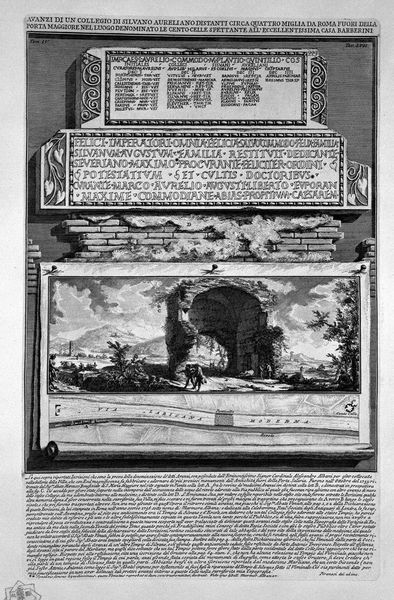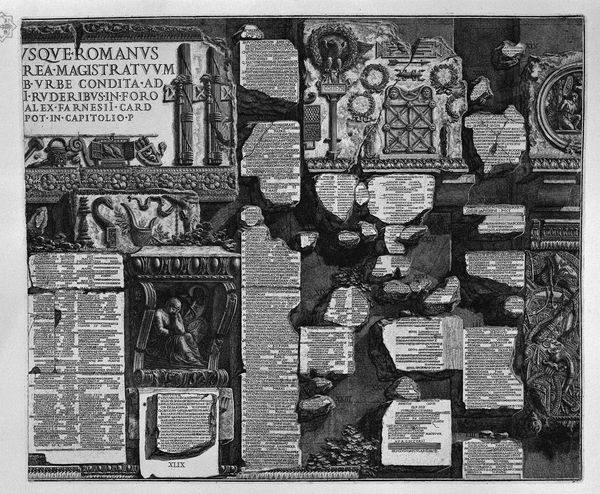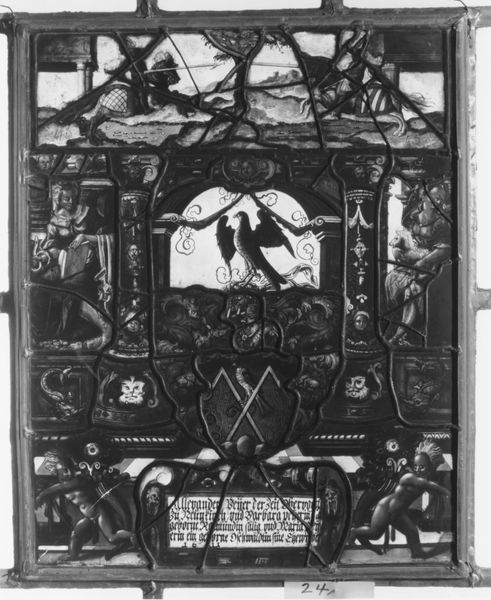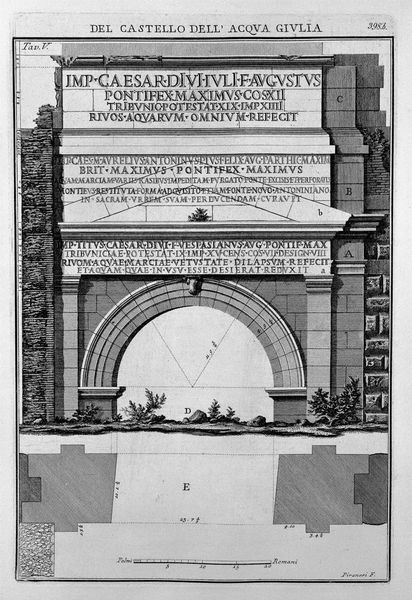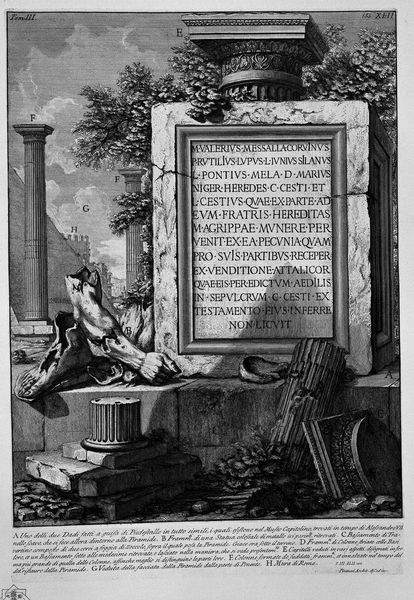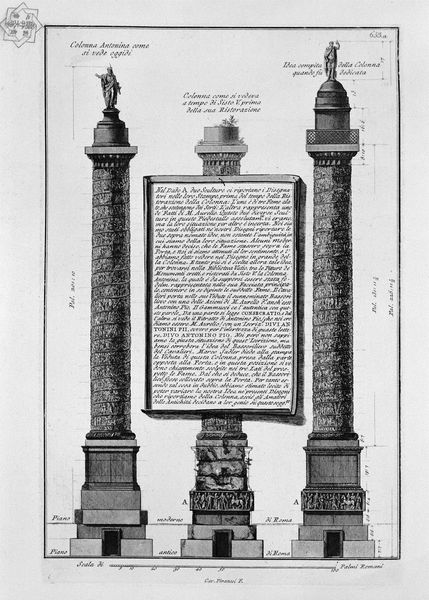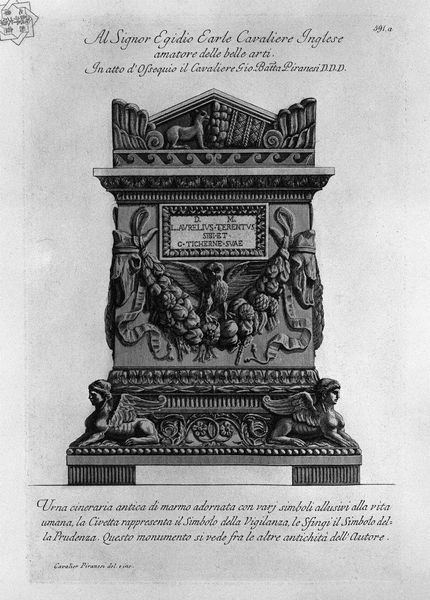
The Roman antiquities, t. 2, Plate LI. Registration of `Soldiers Praetorian guards.
0:00
0:00
drawing, print, etching, engraving
#
drawing
# print
#
etching
#
complex detailed
#
old engraving style
#
black and white theme
#
framed image
#
arch
#
history-painting
#
engraving
Copyright: Public domain
Curator: My first thought looking at this is that I'm staring at some sort of strange monochrome stage set! Everything is so deliberate and carefully placed... Editor: Indeed. What we're viewing is plate LI from Giovanni Battista Piranesi’s “The Roman Antiquities,” specifically the second volume, documenting the inscriptions of soldiers in the Praetorian Guard. It’s an etching and engraving showcasing those monumental Roman inscriptions. Curator: Praetorian Guard inscriptions. Okay, I'm getting less "whimsical theatre," more solemn record keeping! And the detail… Look at those stone textures! The engraver was clearly having fun making rock formations! Editor: Piranesi always does. I see this as an articulation of power structures. Each inscription memorializes individual soldiers within a larger imperial system. Consider how these were likely originally displayed - imagine them in situ within the urban fabric of Rome, serving as permanent testaments to military might. Curator: "Testaments to military might" made by men, perhaps begrudgingly? What about the stonemasons? We can marvel at the inscription, but the execution, in physical reality was… a hot day? Tedious labor? How do *they* fit in, in the frame, I mean the broader frame of power we are addressing here. Editor: Your attention to the uncredited laborer is valid, and the erasure of working-class experiences is pervasive. In some ways, Piranesi's print replicates that erasure, by emphasizing the textual component over any kind of artistic mark making on stone. I suppose his artistic touch renders them...more evocative of an elite and lasting civilization? Curator: "Lasting civilization..." Everything erodes, even Roman power. What will we leave behind? Texts that claim strength but also betray a real frailty, knowing the stone itself crumbles... I see the rock and letters as proof of time eating at everything, an old photograph as the sand dunes swallow the monuments in our minds... It’s haunting. Editor: Your elegiac interpretation moves us from history to memory. These inscriptions weren't just about imperial authority. They also offered these soldiers an element of immortality, both materially, through stone, and symbolically through what they inscribed. Their names are not lost to time. Curator: So it's like Roman-era ancestor worship, then! Paying dues to both emperor AND dearly departed solider… Which I suppose makes Piranesi a glorified obituary transcriber with incredible talent for rendering texture... Editor: If that makes it easier for you! To me, the artistry is about turning historical records into objects of reflection and maybe warning. Now when I look I think that we can be critical observers of any empire - and still find the delicate beauty amidst it all. Curator: Always find the beauty... even as we question who creates it and for what price. Okay, a good reminder!
Comments
No comments
Be the first to comment and join the conversation on the ultimate creative platform.
